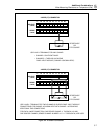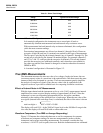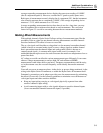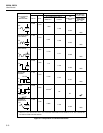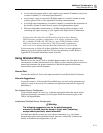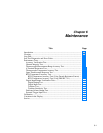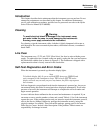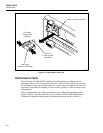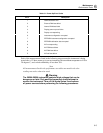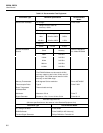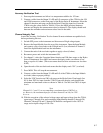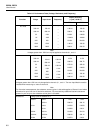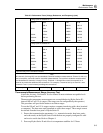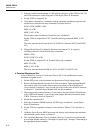
Maintenance
Introduction
6
6-3
Introduction
This chapter describes basic maintenance that the instrument user can perform. Do not
attempt any maintenance not described in this chapter. For additional maintenance,
service, and calibration procedures, qualified service personnel can refer to the Hydra
Series II Service Manual (P/N 688868).
Cleaning
Warning
To avoid electrical shock or damage to the instrument, never
get water inside the case. to avoid damaging the instrument’s
housing, never apply solvents to the instrument.
For cleaning, wipe the instrument with a cloth that is lightly dampened with water or
mild detergent. Do not use aromatic hydrocarbons, chlorinated solvents, or methanol-
based fluids.
Line Fuse
The instrument uses a T 125 mA, 250V (Slow blow) line fuse in series with the power
supply. To replace this fuse (located on the rear panel), unplug the line cord and remove
the fuse holder with the fuse as shown in Figure 6-1. The instrument is shipped with a
replacement fuse that is loosely secured in the fuse holder.
Self-Test Diagnostics and Error Codes
When the instrument is powered up, the entire display lights.
Note
To hold the display fully lit, press and hold K, then press R ON and
wait a moment for the instrument to beep. Then release K. The entire
display will now stay on until you press any button; the power-up sequence
then resumes.
Self-test diagnostics are performed each time the instrument is powered up. Any errors
encountered during this initial 4-second period are displayed momentarily. Even in the
presence of an error, the instrument still attempts to complete the self-test routine and
begin normal operation.
An error indicates that a malfunction has occurred and maintenance is required. If you
encounter an error, note the number or letter and consult Table 6-1. See if the instrument
repeats the error. If the problem persists and you intend to repair the instrument yourself,
refer to the Service Manual. Otherwise, package the instrument securely (using the
original container if available.) Then forward the package, postage paid, to the nearest
Fluke Service Center. Include a brief description of the problem. Fluke assumes no
responsibility for damage in transit.



